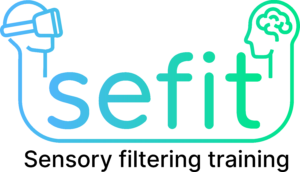SEFIT
The problem of too many stimuli in autistic people
Type of project: Feasibility study
Disability concerned: Autism and Pervasive Developmental Disorders
Topics: Participation in cultural life, sports and leisure activities
Status: Completed
Development of digital exposure therapies to improve the social integration of autistic people in the form of applications and the acquisition of new skills and resources for adaptation.
The project is aimed at autistic people known as Asperger’s according to ICD-10, i.e. high-functioning autistic people. This involves a weakness in the stimulation filter, leading to stimulus overload. Stress, fatigue, overload and panic attacks can follow. People with a weak stimulation filter are not properly integrated into society. Crowds, demonstrations and public transport are a problem for these people.
We conducted a large number of interviews with people affected and therapists. This was combined with a student’s autumn term paper, in which questions were asked about design and usability, as well as how the prototype should look in the future. A member of the team also conducted interviews with people affected and therapists to gain a better understanding of the problem. She was accompanied in turn by two other team members.
Everyone met at team meetings to discuss the results. A member of the team summarised them and visualised them on posters and leaflets.
With the requirements and wishes gathered, we now want to develop a prototype in which the people concerned can put themselves in everyday situations filmed using virtual reality. The aim is for this exhibition to be prepared, produced and discussed with therapists.

